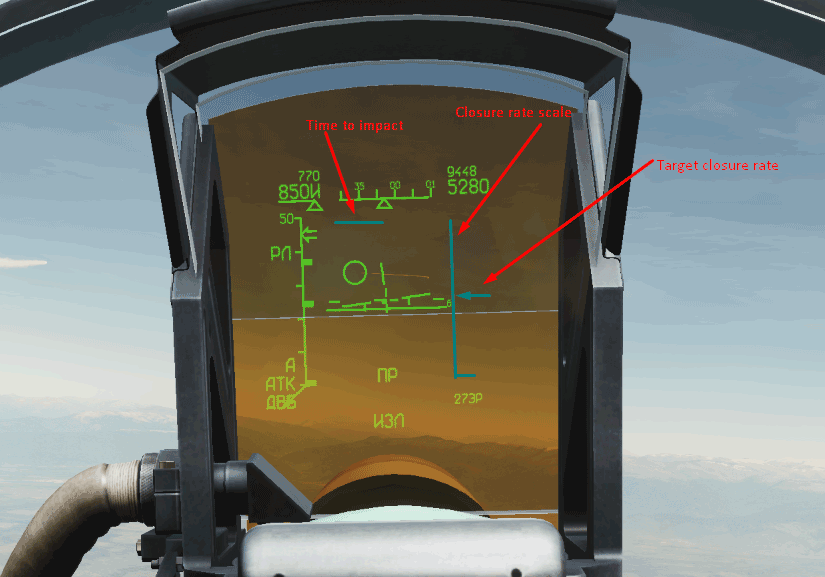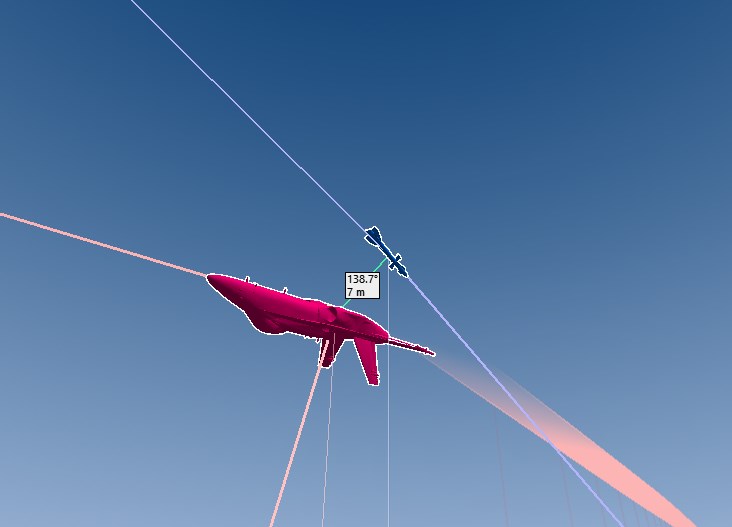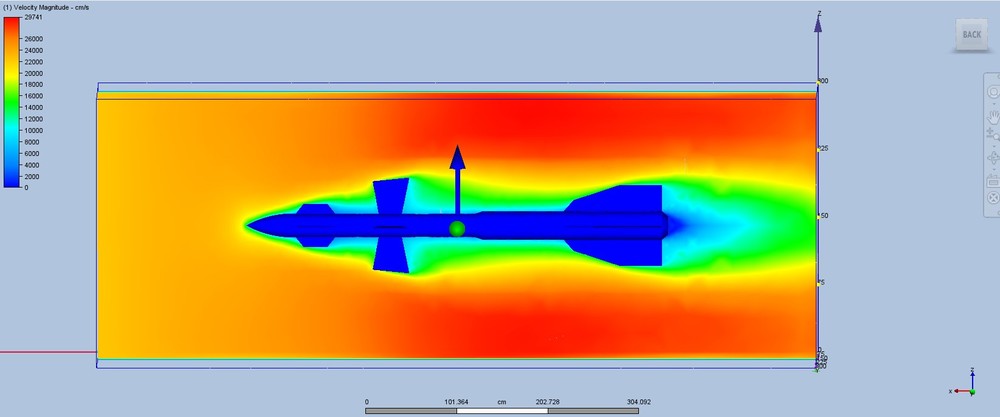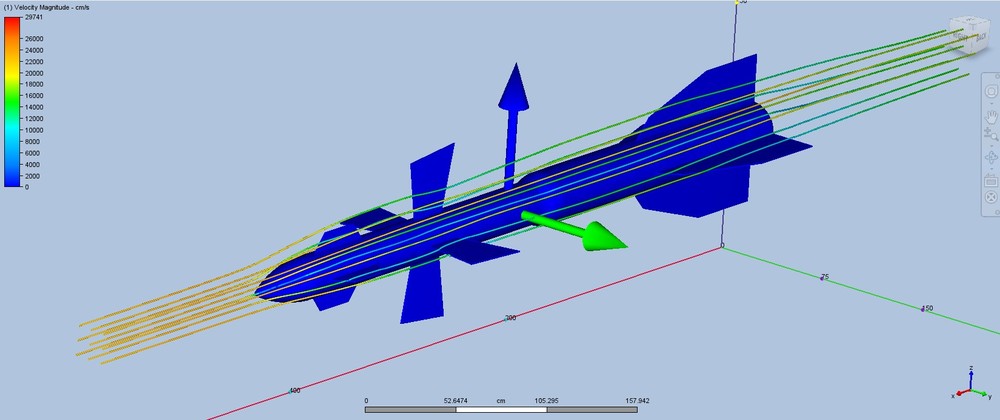-
Posts
835 -
Joined
-
Last visited
Content Type
Profiles
Forums
Events
Everything posted by Cmptohocah
-
Could you please explain what "R aero" and "MAR/E-Pole" shots mean?
-
Su-27SK manual states that minimum and maximum ranges for the R-27ER missile (for a co-alt target and for a range of altitudes from 0 to 10km) are: 2km and 65.5km respectively in PPS (HPRF) mode. I did a test in DCS where I am firing an R-27ER at a co-alt target coming head on and the missile falls short at a distance of around 63km, which is even less than the manual says. There is no mention of the airspeed of the launching aircraft and the target in the manual, so I have assumed a value of 0.8M. Perhaps someone can confirm/disprove this. Target is IL-76MD flying at 10.000km at 0.78M and I have launched form an Su-27 at 10.000m and around 0.82M. Tacview and DCS track are attached. Tacview-20210105-175712-DCS-R-27ER-testing.zip.acmi R-27ER-testing.trk
-
I don't know how it works in real life, but in DCS the RWR goes off when it detects the radiation from the active missile radar.
-

not planned Missing HUD symbology in STT mode
Cmptohocah posted a topic in Flaming Cliffs Bugs & Problems
Our FC3 Su-27 is missing two key features in the HUD when in STT mode (Su-27SK manual: page 193; section 5): Time to impact slider (missile) Closure rate scale I have super imposed the missing elements in the screenshot in dark green color. No idea why these were not implemented yet, but I hope they will. -

Missile warhead sizes and their respective damage potential
Cmptohocah replied to Cmptohocah's topic in DCS: Flaming Cliffs
True, I can't really tell for "blue" planes, but: - Su-27/33, MiG-29 and Su-25T all go down with a single A2A shot. No matter the aspect, missile type or any other factor. Su-27/33 and Su-25T can still fly after taking a stinger/strela shot. Don't have the data on the MiG. - MiG-21 requires 2 hits with an IR missile (SAM or A2A) - Mi-8 goes down after a single IR missile hit (SAM or A2A) -

Missile warhead sizes and their respective damage potential
Cmptohocah replied to Cmptohocah's topic in DCS: Flaming Cliffs
Yeah, "potaito/potato". In general when it comes to A2A or SAM missiles, the greater the range the bigger the missile: R-73 -> R-27 -> R-33, AIM-9 -> AIM-120 -> AIM-54, etc. After @Fri13's explanation it finally makes sense, at least to me, why this trend is true. It also makes sense that smaller, more agile, short range missiles are much more precise to their (comparatively) larger counterparts, otherwise there would be no need to even have them: why invest in high maneuverability of an aircraft (MiG-29, Su-27/33, F-16, F-14) and short range missiles (R-73, AIM-9X), when long/medium range missiles can do the job? Not to mention having an a/c mounted cannon. Vietnam, F-4 is a great example. Of course, there are many other factors at play, but in general there is a clear pattern. -

Missile warhead sizes and their respective damage potential
Cmptohocah replied to Cmptohocah's topic in DCS: Flaming Cliffs
Thanks for the explanation @Fri13. It actually makes sense and does align with "the greater the range, the heavier the warhead" pattern. I just never made the connection. Indeed we miss distance-dependent radar resolution in DCS. -

Missile warhead sizes and their respective damage potential
Cmptohocah replied to Cmptohocah's topic in DCS: Flaming Cliffs
Yes, I meant R-73 instead of R-77 - thanks for the correction. Without going into reasons why the warheads are more massive, it is apparent that the medium-range missiles have heavier warheads than their IR short-range missiles. My question was: "why is this the case?" -
I was wondering, since short-range missiles like R-73 & AIM-9 have relatively small (light) warheads, compared to let's say AIM-120, AIM-7 and R-27, does this mean that the damage they can do is less than the latter set of missiles? Currently in-game it's a true/false situation: one hit-one kill kind of a thing. There are no real damage gradients when it comes to A2A hits, meaning that a hit of any of these is going to end up in a kill - at least for the Su-27/Mig-29/Su-25T. I know that IRL all this will depend on the aspect, distance at detonation, aircraft size and construction and many other factors. Now my question is: is the small warhead of the IR missiles some threshold which means that this amount is enough to bring down the largest of the Russian a/c Su-27? If so, why is more explosive/rods needed on the other missiles (like medium-ranged ones)? Also, Soviet (Russian) engineers deliberately spaced the engines a part (Su-27/33, MiG-29) as much as possible, in order to minimize the chance of both engines getting shot out at the same time. Does this have any effect in DCS? From my experience it doesn't.
-

Does blue have any reliable point defense SAM systems?
Cmptohocah replied to MobiSev's topic in DCS: Combined Arms
Most of the (radar) SAMs in DCS are nothing more than sitting targets waiting to get shot out by the anti-radiation missiles or some low flying planes. What I mean by that is that they don't really use any tactics or "tricks" in order to survive. They are "on" all the time, they don't move and usually engage only at a pre-determined range. -
I think it mostly comes from the drag of the R-27 missiles. If you put same fuel, let's say 75%, and two Su-27s one with 4xR-27 and one with 6x, the latter one will be significantly more sluggish. Now if you consider, what garbage the R-27 missile family is, we come to the conclusion that one should strap on as many as one can. Hence, the sluggish feel.
-
There is no terminal guidance by the missile? Am I reading this correctly? Missile guided to its target through TWS?
-
Yup, the RWR should have been "bitchin'". I had something similar happen to me in multi player, but I assumed that the launch was out side of my RWR area of coverage - perhaps something similar happened to me also.
-
Could be lag or maybe your opponent was cheating. I fly Su-27 all the time and, trust me, it does go down after a couple of hits.
-
I've finally trimmed the track. The track was not recorded by me, but the server this happened on. Engagement is between Su-27 (Nix) and F/A-18C (TANI BG). r27et-fuse.zip.acmi Yeah, having the possibility of warping around the map is quite an issue in multiplayer setup. Would be great if the person lagging just continued it's previous trajectory once the connection is interrupted.
-
Ok, so I decided to go the other way and determine the drag force on a Su-27 with clean configuration (no flaps, no weapons, engines on idle). Disclaimer: there are number of simplifications in this model, so please bare that in mind. Here is the theory: Free falling body in a fluid (vertical drop) has two forces acting on it: 1. gravitation force - G = m x g (pointing down) 2. drag force - Fd (pointing up) The instant the body is dropped its drag force is 0 (drag force increases with speed and initial vertical speed is 0 at the moment of drop) and the only force acting on it is G. This causes the body to accelerate, but as the object picks up speed the drag force increases and continues increasing until the force of gravity and the drag force equalize. At this moment the vertical acceleration is 0 and the body has reached its terminal velocity - vt. Now for some math: Drag force equals to Fd = 0.5 * Rho * A *Cd * v^2, where: Rho - air density [kg/m^3] A - frontal area of the object exposed to the fluid [m^2] Cd - coefficient of drag v^2 - speed of the object squared [m/s] For the simplicity let's introduce a helper element K, which equals to: K = Rho * A * Cd, so now the drag force becomes Fd = K * v^2 From Newton's second law we get the sum of force to be: m * g - Fd = m * a. Experiment: I took an Su-27 without any stores and let it drop from an altitude, straight down vertically until it reached its terminal velocity. It turns out that its terminal velocity, at around sea level, is somewhere around 1470km/h. Here are the flight parameters: m = 22987kg (mass) H0 = 16326m (initial height) H1 = 0 (terminal height - sea level) /\T = 57s (flight time) v0 = 257km/h (initial velocity) v1 = 1470km/h (terminal velocity) AoA ~ 0.4deg (average angle of attack) G ~ 0.2 (load when reached terminal velocity) Alpha ~ 87deg (average pitch angle - negative) Since at terminal velocity the following holds true: m * g - Fd = m * a and since there is no acceleration a = 0, we get the drag force to be Fd = m * g = 22987kg * 9.81m/s^2 = 225502.47N ~ 225.5kN Since we know the speed and the force we can get the value of K = Fd / v^2 = 225502.47 * (408.3)^2 = 1.35267 This means that at sea level and standard (DCS) temperature and pressure we can calculate the drag coefficient as we know the value of Rho (air density) and A (frontal area of the Su-27). Now, I don't know the value of the area so perhaps someone can help out with this one.
-
Can anyone translate this to English ^^^
-
I believe that the upper left scale, with 40, 60, 80 marks, is in kN (kilo-Newtons) - "кН". Very bottom scale should be in Mach. Bottom left says kilograms over something that looks like hour - "ч". Maybe fuel consumption? "кг/Нч"? I feel like an investigator, looking at this picture.
-
Yes, what I forgot to mention is that this was indeed an online track. I will provide it tomorrow after I trimm it. Sadly, this lucky person, did fire an AIM-120 seconds after this, but that is besides the point.
-
Hello, my R-27ET seems to need to collide with the target physically before it explodes. In the screenshot you can see that the missile passes the target at a distance of 7 meters and fails to detonate. Anyway have an idea what might be the issue here? What kind of fuse proximity fuse does the ET use anyway? Please note that at the time of this near miss, the target was not deploying chaff nor flares. This just proves my concept: "If you wanna kill something in a FC3 Soviet jet, you gotta go for a guns kill." Personal note: I would actually like to see these kind of random fails happen on regular basis as it looks a bit more realistic, but since AIMs don't miss anything, I would expect my ETs to behave the same.
-
Hi everyone, the reason for this post is my will to start an initiative that will perform a Computational Fluid Dynamics analysis of the R-27 missile family, so that we can provide the developers with the results in a scientific and transparent manner. I have done some very basic exploratory research using Autodesk CFD software. It's fully functional for a trial period of 30 days, but can be used multiple times (instructions upon request in PM). The 3D model was created in Catia, but the CFD software accepts many different formats. I would like to ask for help from any people that are knowledgeable in this area, people that are good in 3D modeling and basically anyone else willing to contribute, to help me out in setting up proper wind tunnel analysis and results post processing. I do have a Master's in Engineering, but I got my degree some time ago and I am quite rusty in fluid dynamics, meaning I suck at it. Here are some pictures from the initial trials. Figure 1.0 - velocity graph Figure 2.0 - airflow
- 63 replies
-
- 10
-






